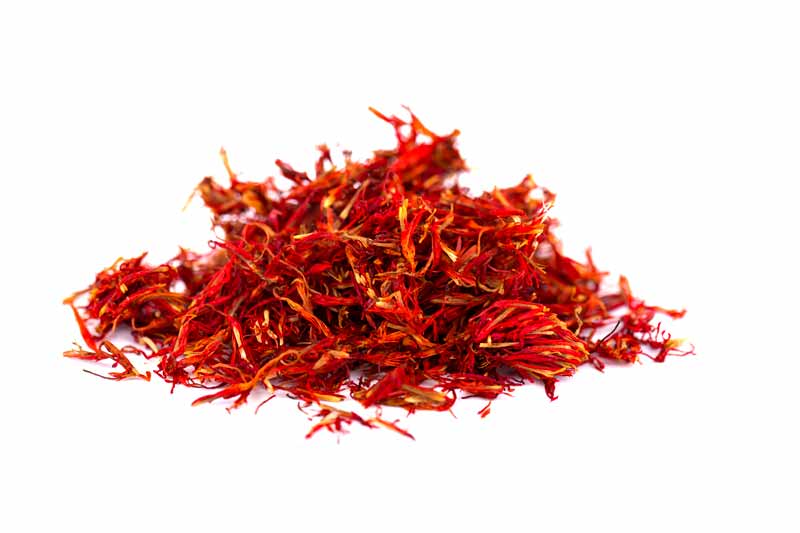Saffron Oleoresin
Oleoresin of saffron obtained from stigmas of Crocus sativus L., extracted with different solvents, i.e. methanol, ethanol, propanol, acetone, ethyl acetate and petroleum ether. The variables studied were nature of extracting solvent, extraction temperature, extraction yield, solvent stripping. The quality of oleoresin extract was evaluated using high performance liquid chromatographic and spectrophotometric methods. This study attempts to get the best condition for the extraction process that gives the best yield and quality of oleoresin from dried saffron.
Saffron is a very costly spice, used to flavor and color food. A flower's stigma accepts the pollen that is produced by the stamen, which becomes the seeds of the next generation. Each stigma is very small, and tens of thousands of individual strands go into a single ounce of the spice; since the stigmas are hand-plucked from the individual flowers, saffron's high cost becomes more understandable. It is thought that saffron is the most expensive spice in the world.
Saffron originated in the middle east, but is now also associated with Greek, Indian and Spanish cuisines. Fortunately, a very little saffron goes a long way €“ it is a spice to be added one thread at a time. Just a thread or two can flavor and color an entire pot of rice. The flavor is distinctive and pungent.
Saffron is widely used in Ayurvedic medicine, India's traditional system of health that relies on natural products, prevention and balance. It is used in remedies for everything from arthritis and asthma to infertility and impotence. Ancient Egyptians used saffron to treat kidney problems, and there are now research results that might suggest that one of the ingredients in saffron lowers (or assists in lowering) high cholesterol. There are even suggestions that saffron may have been used against cancer in the middle ages, although with what success is unknown
Organoleptic, Physical, Chemical & Microbiological Characteristics:
Appearance: Dried dark red filaments, with a small percentage of yellow or white stamens and styles.
Aroma & flavor: Characteristic of the product, aromatic.
Size of filaments: 15 - 40 mm in length
Moisture: < 12.0 %
Ash Content: < 8.0 %
Acid Insoluble Ash: < 1.0 %
Extraneous Matter: < 0.5 %
Storage: For best results, saffron should be stored in an ambient temperature and protected from exposure to light. The product is normally good for at least 3 years from the date of packing.

-
Good product and service, received in good manner
John Andrews 4 August, 2014
Write a Review





